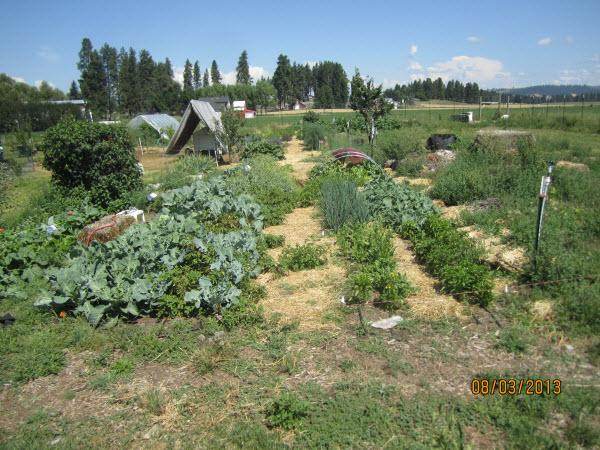Hi John,
As you can see we had a flurry of activity about this time last year and then I suspect that everyone got busy outside like I did. However over the winter I went on a developing binge and am close to releasing a client product to help manage the cycles of building and maintaining a perennial food forest.
Several people had been concentrating on the "Mother Ship" of plant data. Andru Vallance with Practical Plants made a compelling argument that we need to find a way to cooperate in building and maintaining a central repository for plant data. He makes the point that as soon a new project takes the core data into a new direction it is subject to fragmentation. There are several internet plant databases out there but many if not most started with data provided by a group in England called Plants for a Future (PFAF.org). Many have spawned new User Interfaces and dimensions of data that is now adding value in new ways.
These websites provide a great service to the world by collecting, organizing and presenting the data via websites with some powerful searches. "What nitrogen fixing plants will work in my Climate Zone?". They have a very big problem because they are collecting data on plants from all over the world that have adapted to different climates and conditions. It is the users (from every part of the world) who must sift through those plants (7,000+ at PFAF.org) to find the 1-200 most useful to them and their climate and growing conditions.
I, on the other hand have taken a different approach. I am supporting the Permaculturists who are BUILDING and MANAGING perennial food forests and gardens. My system supports 5 continuous phases in the PLANT portion of a project. To do this I felt that it was VERY IMPORTANT that the information pertaining to the plants in your project be stored on a client computer in case Internet access is no longer available. Therefore I have built a client database application that sits on the edge of the Cloud (internet) facing out and in. All of my forms pertaining to Plants, Planting Locations and Vendors have internal web browsers that act as "Favorites" for each plant, location and vendor.
When you surf and find something you like about a plant, planting technique, canning instructions or recipes... you just save the reference for the plant. To start the user off I have built in programmatic access to some of the most common internet search engines: Google, Bing, Wikipedia, USDA, Plants for a Future, Practical Plants (though I am having some problems with this one). You will also be able to add your own web resources and choose a default. As you walk down through plant lists as each plant is selected you can choose to do a default web search. I will often use PFAF or USDA (for native forestry species).
The supported project phases are:
Research – Explore plants, create and refine lists to create Your project plant lists.
Planning – define planting locations for up to four (optional) levels (Project, Area, Forest/Garden, Bed (Hagarville Food Forest, back yard, Food Forest zone 1, North Flower Bed)
Acquisition - Match the plants you have selected and find vendors. Create order lists by vendor, plant and/or planting location.
Management – create maintenance plans for each tree/perennial/annual (Year 1 Tree: prep hole, plant, compost mulch, prune, paint trunk, etc.)
Observation – Use the built in Garden Journal to record observations, when you planted, harvested, etc.. The journal also coordinates each day with Photographs taken of the project. I can take my smartphone (or digital camera) out into the garden periodically and tak pictures of each zone, tree, bush, bed or plant of interest. Later each Photo can go through a “Review” process where you associate the photo with any of the Plants (from your list) or Planting Locations. Then when you review plants (or locations) you can see the photos associated with them over time. June, July, August or Year 1, 2 or 3. The final observational component is that I use a $100 Weather Station that collects weather data and streams it out to the Journal. So for every day you can see the Weather (Hi/Low Heat, Wind, Rain, Humidity and Daylight, based on latitude), your journal entries, management activities and photos.
One of the best aspects of the system is that it keeps a history on where you get your plant data. As you navigate through the premium plant websites on the planet you also provide them page clicks for their advertisers and drive more new users to their sites.
Not only is the data on individual plants useful, but researchers (global, national, regional and local) also put together lists of those plants that fill a niche for their area. These lists may come from you neighbor or a favorite book from Toby Hemenway, Eric Toensmeier or a local website (www.SpokanePermaculture.org). Each Plant contains a web link to the source of the data and each “List” can also have a link to the website, page or book of the originator.
Enough about my progress for now…
How are you trying to plug in John? What in the Permaculture Voices conference inspired you to reach out to the IT space?
Also… are any of the IT bears beginning to awaken? Anything new happening with Master Databases? Anything else?
Best wishes to all,
Mike
















